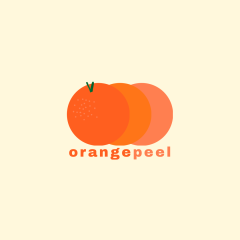Berlinda Paliza Recacho is a writer and artist whose literature has been featured in two orangepeel issues, “in conversation” and “the future.”
op: Could you give us a quick introduction to yourself?
bpr: I went to art school to become a visual artist, then followed up with grad school in arts administration. Now I work at a nonprofit by day—and make art during all other hours. I’ve become a better writer by being a discerning reader and paying close attention. I try to trust my own instincts. When I was a child, I just wrote about whatever I found fascinating, regardless of whether it made sense. I’m getting back to that immediacy by letting the writing lead. Sense will follow. Or even if it doesn’t, it at least makes for an interesting jaunt.
op: How would you describe your writing process?
bpr: I don’t write in a straight line—or in chronological order, and there’s a lot of shuffling and cutting and pasting before the end. I tend to do my best writing (and editing!) while in transit. Once on a tight deadline I wrote a short story in the middle of a commute, repeating lines and testing dialogue out loud and scribbling notes at stoplights. I’ve learned to write everything down. When a thought that shows promise escapes into the ether—the insistent nagging regret that follows is far worse than the effort it takes to capture it immediately even if it doesn’t seem like it will amount to much. You can always set it free later.
op: “Live Your Life, Build a Home, Fill It Full of Flowers and Bottles of Eau de Cologne,” from Issue 6, is inspired by film, while “On an unevenly expanding universe, listening to Big Audio Dynamite’s ‘e=mc2’” takes inspiration from music. What, to you, makes these creative works worth writing about?
I love finding unlikely connections. I think all art is meant to refer and reflect on other art.
I was playing Big Audio Dynamite’s “E=mc2” when I noticed for the first time ever that lyrics in the song alluded to Nicholas Roeg’s film Don’t Look Now; upon closer listen, I realized that all the verses alluded to movies by that same director. Finding a structure underneath the frame fit my poem’s exploration of the relativity of future, past and present. On viewing Agnes Varda’s Cleo, from 5 to 7 and Jean-Luc Godard’s Vivre Sa Vie, I was struck by the fact that both films were made in 1961, and set in Paris. Their fates could not be more different, but each woman is on her own quest for personal autonomy, which was not typical for women of that generation. “Live Your Life, Build a Home…” imagines what might have happened if Cleo and Nana ran into each other on the street. I’m using the narrative as a springboard for an artist book series featuring drawings of Cleo and Nana, moving through parallel plotlines. The title itself is an anachronism from the future in relation to the story, a poetic line from the song “A Certain Someone” (1990) by The Sundays.
op: Do you have any other evocative films, songs, or anything else that you plan to write about in the future?
bpr: I’d like to compare and contrast Wong Kar-Wai’s In The Mood For Love and Stanley Kwan’s Rouge or Olivier Assayas’ Personal Shopper and Celine Schiamma’s Petit Maman. The blog A Pessimist is Never Disappointed just published my review of Words And Music, a new box set celebrating the astonishingly talented Margo Guryan. She was a classically trained pianist who composed jazz standards, was one of the first female pop singer-songwriters, and whose debut became her only album when she refused to promote her work on the record studio’s terms. She felt she was discovered (not rediscovered) in the last quarter of her life, after almost half a century of teaching music. We should all be more like Margo.
op: Lastly, what are three things you want us to know about you or your work?
bpr: 1. I enjoy finding the mysterious and uncanny in the ordinary and everyday.
2. I am drawn to a good ghost story–especially if the ghosts are not who, where or what you expect them to be.
3. I strive to make cinematography out of words and drawings.

